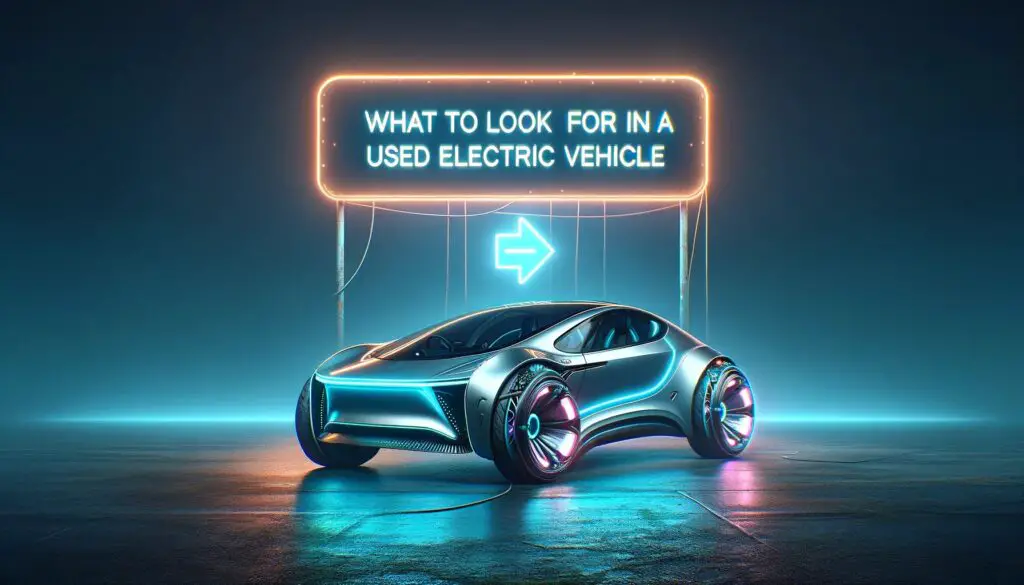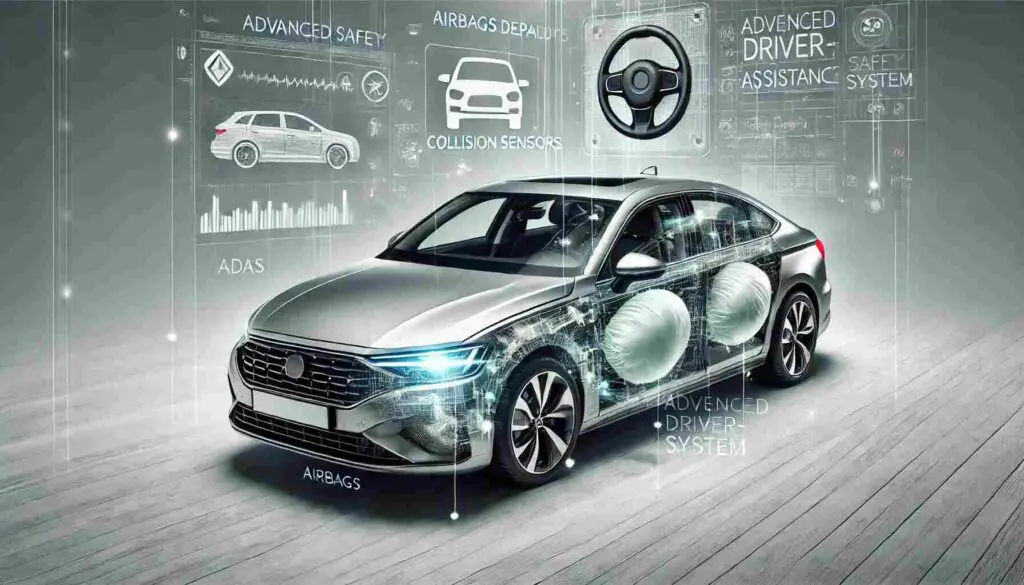The surge in popularity of electric vehicles (EVs) is undeniable, with an increasing number of consumers recognizing the numerous benefits they offer. One avenue gaining significant traction is the market for used electric vehicles. In this comprehensive guide, we delve into the intricacies of purchasing a used EV, highlighting its advantages and crucial considerations.
Understanding Electric Vehicles: A Brief Overview
Electric vehicles (EVs) have undergone a remarkable transformation from their early conceptualization to becoming viable alternatives to traditional combustion-engine vehicles. Understanding this evolution provides valuable insights into the current state of electric mobility.
Early Experiments
In the late 19th and early 20th centuries, inventors and engineers began experimenting with electric vehicles. These early prototypes often featured bulky batteries and limited range, primarily used for niche applications such as urban delivery vehicles and electric taxis.
Mainstream Adoption
Advancements in battery technology, motor efficiency, and charging infrastructure have propelled electric vehicles into the mainstream. Manufacturers worldwide have invested heavily in research and development, resulting in the production of affordable and practical electric models for consumers.
How Electric Vehicles Work
A fundamental understanding of how electric vehicles operate is essential for prospective buyers to make informed decisions.
Power Source: Rechargeable Batteries
Electric vehicles are powered by rechargeable batteries, typically lithium-ion cells, which store electrical energy. These batteries supply electricity to one or more electric motors, driving the vehicle’s wheels. Unlike traditional gasoline-powered cars, EVs do not rely on internal combustion engines, resulting in zero tailpipe emissions.
Propulsion: Electric Motors
Electric motors serve as the propulsion system in electric vehicles, converting electrical energy from the battery into mechanical energy to drive the vehicle forward. Electric motors offer several advantages over internal combustion engines, including higher efficiency, instantaneous torque delivery, and quieter operation.
Advantages of Owning an Electric Vehicle
The decision to transition to electric mobility is influenced by a multitude of factors, each offering distinct advantages over traditional gasoline-powered vehicles.
Environmental Benefits
One of the most compelling reasons to own an electric vehicle is its environmental friendliness. By eliminating tailpipe emissions associated with gasoline combustion, EVs contribute to reducing air pollution and combating climate change. Additionally, as the grid becomes increasingly powered by renewable energy sources, the carbon footprint of electric vehicles continues to decrease.
Lower Operating Costs
Electric vehicles offer significant savings in operating costs compared to their gasoline counterparts. Electricity is typically cheaper than gasoline on a per-mile basis, resulting in lower fuel expenses. Moreover, electric vehicles have fewer moving parts than internal combustion engines, reducing the need for maintenance and minimizing long-term servicing costs.
Smoother Acceleration
The instant torque delivery of electric motors provides electric vehicles with a unique driving experience characterized by smooth and responsive acceleration. Unlike gasoline-powered vehicles that rely on revving up internal combustion engines, electric vehicles deliver maximum torque from standstill, resulting in brisk acceleration and enhanced driving dynamics.
Minimal Maintenance Requirements
Electric vehicles have fewer mechanical components than traditional gasoline-powered vehicles, resulting in reduced maintenance requirements. With no engine oil to change, no spark plugs to replace, and fewer moving parts subject to wear and tear, EV owners benefit from simplified maintenance schedules and lower long-term servicing costs.
Making Informed Decisions: Factors to Consider Before Buying a Used Electric Vehicle
Before committing to the purchase of a used electric vehicle (EV), it is essential to carefully evaluate several critical factors. In this section, we delve into the key considerations that prospective buyers should keep in mind to make informed decisions.
Budgetary Constraints and Financing Options
First and foremost, buyers must assess their budgetary constraints and explore available financing options. Determining affordability is paramount to avoid overextending financially. Consider factors such as the purchase price of the used EV, potential financing rates, and monthly payment obligations. By establishing a realistic budget and exploring financing alternatives, buyers can ensure that the acquisition of a used electric vehicle aligns with their financial capabilities.
Range and Battery Health Assessment
Assessing the vehicle’s range and battery health is crucial to gauge its longevity and performance. Electric vehicle batteries degrade over time, impacting their ability to hold a charge and deliver optimal range. Prioritize vehicles with well-maintained batteries and sufficient remaining capacity. Request access to battery health reports or diagnostic tests conducted by qualified technicians. Additionally, inquire about the battery’s warranty coverage and any potential costs associated with battery replacement or refurbishment.
Charging Capabilities and Infrastructure Compatibility
Evaluating the vehicle’s charging capabilities and compatibility with existing infrastructure is essential for seamless integration into daily routines. Determine the charging speed and type supported by the EV, such as Level 1 (120-volt), Level 2 (240-volt), or DC fast charging. Assess the availability and accessibility of charging stations in your area, considering both public and home charging options. Ensure compatibility with preferred charging networks and explore any potential costs associated with installation or upgrades to accommodate charging needs.
Maintenance History and Warranty Coverage
Scrutinizing the maintenance history and warranty coverage provides valuable insights into the vehicle’s past upkeep and potential future expenses. Request comprehensive maintenance records from the seller, including routine servicing, repairs, and any warranty-related work performed. Pay particular attention to the frequency of maintenance tasks and any recurring issues reported. Verify the remaining warranty coverage for both the vehicle and its components, including the battery pack and electric drivetrain.
Model-Specific Considerations
Each electric vehicle model possesses unique characteristics and considerations that should inform the decision-making process. Research model-specific factors such as recalls, reviews, and resale value to anticipate potential challenges and opportunities. Consult reputable sources for insights into common issues reported by owners and the overall satisfaction level with the model. Consider factors such as available features, technological advancements, and long-term reliability to ensure that the chosen EV aligns with your preferences and priorities.
In summary, before purchasing a used electric vehicle, carefully consider factors such as budgetary constraints, range and battery health, charging capabilities, maintenance history, warranty coverage, and model-specific considerations. By conducting thorough due diligence and making informed decisions, buyers can maximize their satisfaction and enjoyment of electric mobility while minimizing potential risks and expenses.
Facilitating Seamless Integration: Understanding Charging Infrastructure for Electric Vehicles
An extensive charging infrastructure is crucial for facilitating the widespread adoption of electric vehicles (EVs). In this section, we explore the various aspects of charging infrastructure that prospective buyers should consider to ensure seamless integration and convenient ownership.
Importance of Charging Infrastructure
Charging infrastructure plays a pivotal role in the adoption and acceptance of electric vehicles by providing drivers with convenient access to charging facilities. A robust charging network alleviates concerns about range anxiety and enables EV owners to charge their vehicles conveniently, whether at home, work, or on the go. Therefore, understanding the types of charging stations available and assessing their accessibility is essential for prospective buyers.
Types of Charging Stations
Buyers should familiarize themselves with the different types of charging stations available to meet their charging needs effectively. Charging stations typically fall into three categories: Level 1, Level 2, and DC fast chargers. Level 1 chargers utilize standard 120-volt household outlets and are suitable for overnight charging at home. Level 2 chargers operate on 240-volt circuits and offer faster charging speeds, making them ideal for home installations and public charging stations. DC fast chargers provide rapid charging capabilities, significantly reducing charging times and enabling long-distance travel.
Assessing Availability and Accessibility
Prospective EV buyers should assess the availability and accessibility of charging stations in their vicinity to ensure convenient charging options. Various online platforms and mobile applications provide maps and directories of charging stations, allowing users to locate nearby facilities and plan their charging routes effectively. Consider factors such as the density of charging stations, their proximity to frequently visited destinations, and the availability of amenities such as restrooms or dining options when evaluating charging infrastructure.
Exploring Home Charging Options
Exploring home charging options is essential for EV owners to streamline their ownership experience and ensure convenient access to charging facilities. Installing a Level 2 charging station at home allows for faster charging speeds and greater convenience compared to relying solely on public charging infrastructure. Evaluate factors such as charging station compatibility with existing electrical infrastructure, installation costs, and potential incentives or rebates available for home charging equipment to make informed decisions.
Compatibility with Existing Infrastructure
Consideration of compatibility with existing infrastructure is crucial when selecting an electric vehicle and charging equipment. Ensure that the chosen EV model is compatible with the types of charging stations available in your area, including Level 1, Level 2, and DC fast chargers. Additionally, verify compatibility with home charging equipment and electrical systems to avoid compatibility issues and ensure seamless integration into your daily routine.
In conclusion, understanding and evaluating charging infrastructure is essential for prospective electric vehicle buyers to facilitate seamless integration and convenient ownership. By familiarizing themselves with the types of charging stations available, assessing their availability and accessibility, exploring home charging options, and considering compatibility with existing infrastructure, buyers can make informed decisions and enjoy the benefits of electric mobility with confidence. Prioritizing charging infrastructure considerations ensures a hassle-free and enjoyable electric vehicle ownership experience.
Tailoring the Choice to Individual Needs: Researching Model-Specific Considerations for Electric Vehicles
Selecting the right electric vehicle (EV) involves thorough research into model-specific considerations to ensure that the chosen vehicle aligns with individual needs and preferences. In this section, we explore the importance of researching model-specific factors and considerations for informed decision-making.
Understanding Unique Characteristics
Each electric vehicle model comes with its unique set of characteristics, features, and considerations that differentiate it from others in the market. Buyers should familiarize themselves with the specific attributes of each model to understand its strengths, weaknesses, and suitability for their intended usage. Factors such as range, performance, interior space, and available features vary across different EV models and can significantly impact the ownership experience.
Anticipating Potential Challenges
Conducting research into common issues or recalls associated with specific EV models allows buyers to anticipate potential challenges and make informed decisions. Manufacturers occasionally issue recalls to address safety concerns or rectify defects in certain vehicle components. By staying informed about past recalls and known issues, buyers can assess the likelihood of encountering problems with a particular model and take appropriate precautions.
Exploring Reviews and Owner Experiences
Exploring reviews and owner experiences provides valuable insights into the real-world performance and satisfaction levels of electric vehicle models. Owners often share their experiences, opinions, and feedback on online forums, social media platforms, and dedicated EV community websites. Reading reviews and testimonials from current owners can offer valuable perspectives on aspects such as driving dynamics, reliability, comfort, and overall satisfaction, helping prospective buyers make well-informed decisions.
Assessing Resale Value and Long-Term Reliability
Considering factors such as resale value and long-term reliability is essential for making a sound investment in an electric vehicle. Resale value reflects the vehicle’s retained worth over time and can influence its overall cost of ownership. Researching historical resale trends and depreciation rates for specific EV models provides insight into their long-term value retention potential. Additionally, assessing long-term reliability metrics, such as reliability ratings, maintenance costs, and warranty coverage, helps buyers gauge the expected durability and ownership costs associated with a particular model.
In conclusion, researching model-specific considerations is crucial for tailoring the choice of an electric vehicle to individual needs and preferences. By understanding unique characteristics, anticipating potential challenges, exploring reviews and owner experiences, and assessing factors such as resale value and long-term reliability, buyers can make informed decisions that align with their lifestyle, budget, and priorities. Prioritizing thorough research empowers buyers to select an EV that meets their expectations and delivers a rewarding ownership experience.
Negotiating Price and Closing the Deal: Securing a Favorable Transaction
Conducting market research to ascertain prevailing prices for used electric vehicles empowers buyers during negotiations. Factors such as vehicle condition, mileage, and market demand influence negotiation leverage. Prior to finalizing the purchase, conducting a comprehensive inspection ensures transparency regarding the vehicle’s condition and potential maintenance requirements. Finalizing paperwork and facilitating the transfer of ownership conclude the transaction, culminating in a seamless and satisfactory buying experience.
Frequently Asked Questions (FAQs): Addressing Common Concerns
- What is the lifespan of an electric vehicle battery?
- The lifespan of an electric vehicle battery varies depending on factors such as usage patterns, environmental conditions, and battery chemistry. Generally, modern electric vehicle batteries are designed to last for several years, with manufacturers offering warranties ranging from 8 to 10 years or more.
- How do I know if an electric vehicle is right for me?
- Assessing your driving habits, commuting distance, access to charging infrastructure, and environmental priorities can help determine if an electric vehicle aligns with your needs and lifestyle.
- Are used electric vehicles eligible for government incentives?
- In many regions, used electric vehicles may qualify for government incentives, rebates, or tax credits aimed at promoting sustainable transportation and reducing emissions.
- What should I look for during a test drive of a used EV?
- During a test drive, pay attention to the vehicle’s acceleration, handling, braking performance, and any unusual noises or vibrations. Additionally, assess the range and battery performance under real-world driving conditions.
- How does depreciation affect the value of a used electric vehicle?
- Similar to traditional vehicles, electric vehicles experience depreciation over time. Factors such as mileage, age, technological advancements, and market demand influence the resale value of used electric vehicles.
- Can I install a home charging station for an electric vehicle?
- Yes, homeowners can install dedicated home charging stations for electric vehicles to facilitate convenient and efficient charging. Various options are available, ranging from Level 1 chargers that utilize standard household outlets to Level 2 chargers with faster charging capabilities.
- Are there any drawbacks to buying a used electric vehicle?
- While used electric vehicles offer numerous benefits, potential drawbacks include uncertainty regarding battery health, limited availability of certain models, and the possibility of encountering undisclosed maintenance issues.
- How do I find reputable sellers of used electric vehicles?
- Researching reputable dealerships, certified pre-owned programs, and online marketplaces with transparent selling practices can help identify trustworthy sellers of used electric vehicles.
- What steps can I take to maximize the lifespan of an electric vehicle battery?
- Adopting practices such as avoiding deep discharges, minimizing exposure to extreme temperatures, and adhering to recommended charging protocols can help prolong the lifespan and performance of an electric vehicle battery.
- Are there any financing options specifically for used electric vehicles?
- Many financial institutions offer financing options tailored to used electric vehicles, including competitive loan rates, extended warranties, and flexible repayment terms.
In conclusion, purchasing a used electric vehicle presents a compelling opportunity to embrace sustainable transportation while enjoying cost savings and environmental benefits. By considering the factors outlined in this guide and conducting thorough research, buyers can make informed decisions that align with their preferences and priorities, ensuring a rewarding ownership experience.









